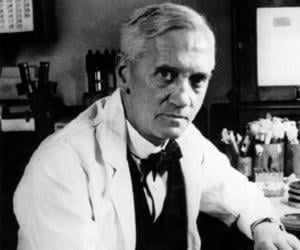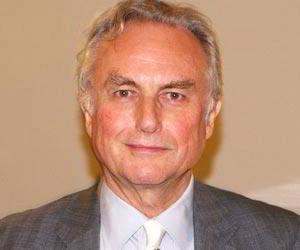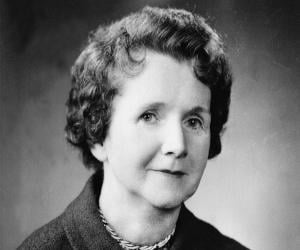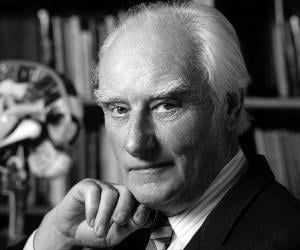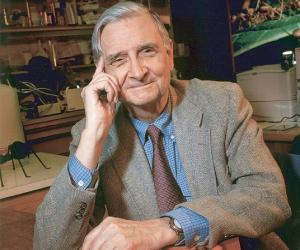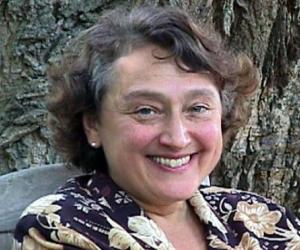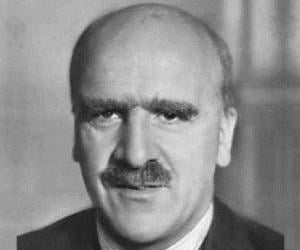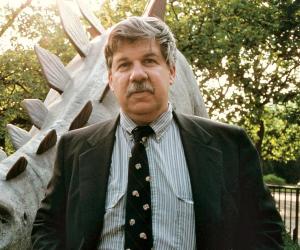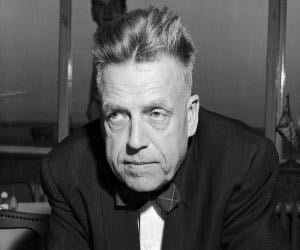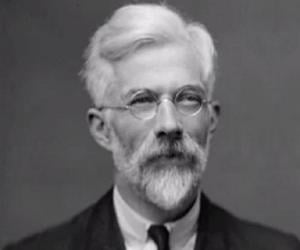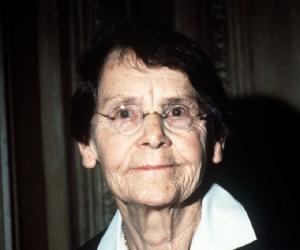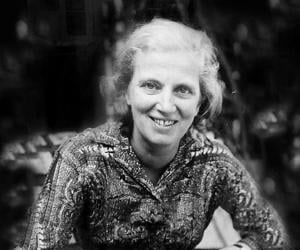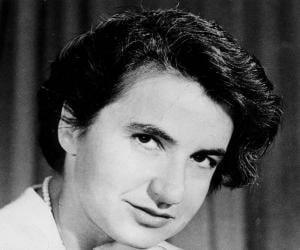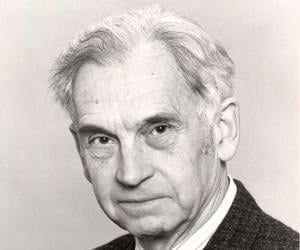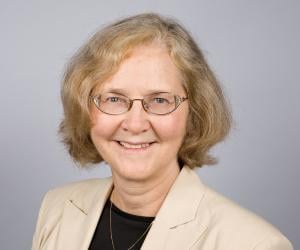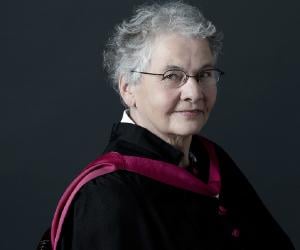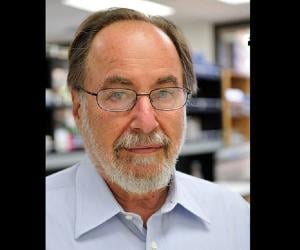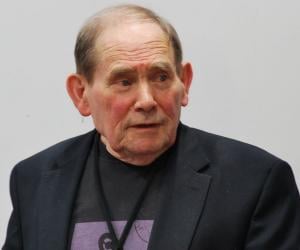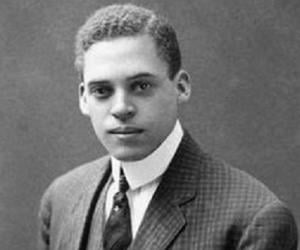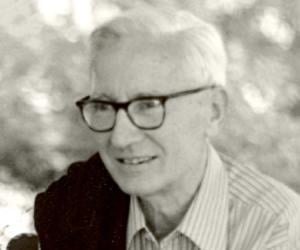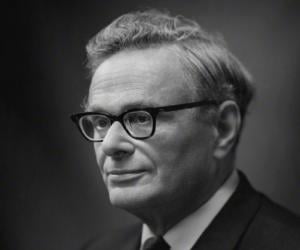Alexander Fleming was a Scottish microbiologist and physician. He is credited with discovering penicillin, the world's first effective antibiotic substance; a discovery that changed the course of history. He also discovered lysozyme, an antimicrobial enzyme which forms part of the innate immune system. In 1999, Fleming was named in Time magazine's 100 Most Important People of the 20th century list.
Richard Dawkins is a British ethologist, author, and evolutionary biologist. He first achieved popularity after publishing his book, The Selfish Gene, which is credited with popularizing the gene selection theory. The book is also credited with introducing the term meme. In 2006, he established the Richard Dawkins Foundation for Reason and Science to promote secularism and scientific literacy.
Rachel Carson was a conservationist, marine biologist, and author. She is credited with authoring an influential book titled Silent Spring, which played a significant role in advancing the global environmental movement. Carson is also remembered for her book, The Sea Around Us, which earned her a U.S. National Book Award. She was posthumously honored with the Presidential Medal of Freedom.
Nobel Prize-winning British biophysicist Francis Crick is best known for his ground-breaking work to determine the structure of the DNA, along with James Watson, Maurice Wilkins, and Rosalind Franklin. He taught at various institutes, such as the Salk Institute, and was also awarded the Order of Merit.
E. O. Wilson is an American naturalist, biologist, and writer. An influential biologist, Wilson has earned several nicknames, such as The Darwin of the 21st century. He has also been referred to as the father of biodiversity and the father of sociobiology. In 1995, he was ranked among the most influential American personalities by Time magazine.
Lynn Margulis was an evolutionary theorist, biologist, educator, and science author. She was a modern proponent of the significance of symbiosis in evolution. Along with British chemist James Lovelock, Margulis was the co-developer of the Gaia hypothesis. She was a strong critic of neo-Darwinism. In 2001, she was honored with the Golden Plate Award of the American Academy of Achievement.
British geneticist J.B.S. Haldane is remembered for his pioneering use of statistics in biology. A proponent of neo-Darwinism, he was the son of physiologist John Scott Haldane and had begun assisting his father at age 8. He later joined the British Communist Party and also moved to India.
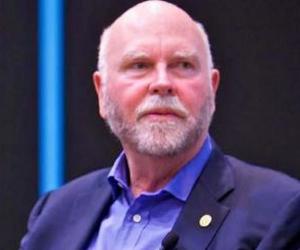
Craig Venter biotechnologist and businessman best known for leading the first draft sequence of the human genome. He is the founder of Celera Genomics and the Institute for Genomic Research (TIGR) and the co-founder of Human Longevity Inc. He received the Dan David Prize for his contribution to genome research and is a member of the American Philosophical Society.
Stephen Jay Gould was an American evolutionary biologist, paleontologist, and historian of science. One of the most widely read and influential authors of popular science, Gould was named a Living Legend in April 2000 by the US Library of Congress. He is also counted among the most frequently cited scientists, as far as evolutionary theory is concerned.
Alfred Kinsey was an American biologist, sexologist, and professor of zoology and entomology. He is credited with founding the Indiana University's Institute for Sex Research in 1947. Kinsey's research on human sexuality and his other works have influenced cultural and social values in the USA as well as internationally. In 2012, Kinsey was inducted into Chicago's Legacy Walk.
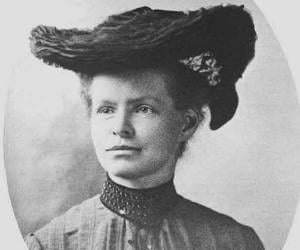
Nettie Stevens was an American geneticist. She is credited with discovering sex chromosomes which later came to be known as the X and Y chromosomes. In 1994, Nettie Stevens was inducted into the National Women's Hall of Fame.
Ronald Fisher was a British polymath, statistician, geneticist, mathematician, and academic. He is credited to have single-handedly created the foundations for modern statistical science. He made important contributions to the field of genetics and is known as one of the three principal founders of population genetics. He was elected to the Royal Society in 1929.
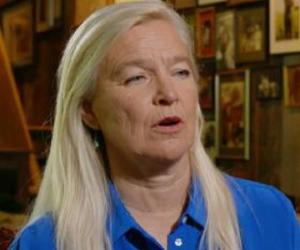
Nell Newman is a biologist, environmentalist, and former child actress. An ardent supporter of sustainable agriculture, Newman is credited with founding a pet food and organic food production company called Newman's Own. For her environmental leadership, Newman was honored with the Rachel Carson Award in 2014. In 2017, she was made an inductee of the Specialty Food Hall of Fame.
Barbara McClintock was a scientist and cytogeneticist who received the 1983 Nobel Prize in Physiology or Medicine. She earned her Ph.D. in botany from Cornell University and began her lifelong work in the development of maize cytogenetics. She eventually gained recognition as among the best in the field and was honored with several prestigious awards.
Dorothy Hodgkin received the 1964 Nobel Prize for mapping the structure of penicillin and Vitamin B12. She is also known for her work on insulin. Beginning her work on structure of an organic compound by using X-ray crystallography as an undergraduate student, she later developed it further and used it to determine the three-dimensional structure of complex organic molecules.
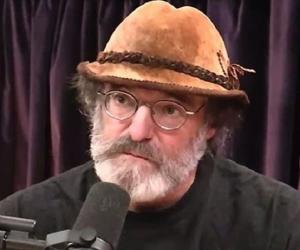
Paul Stamets is an American entrepreneur and mycologist. An ardent supporter of mycoremediation and medicinal fungi, Stamets sells various mushroom products. In 2014, he was honored by the American Association for the Advancement of Science with an Invention Ambassador award. In 2019, he contributed immensely to the creation of a documentary film titled Fantastic Fungi.
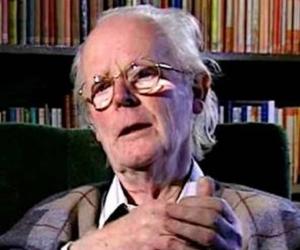
One of the most influential evolutionary biologists of his generation, John Maynard Smith was originally aeronautical engineer. Later, he took a second degree in genetics and did extensive research on subjects like population genetics and evolution of sex. Known for formalizing the central concept in evolutionary game theory, he introduced the evolutionarily stable strategy, impacting a wide variety of studies.

Renowned James Lovelock is best known for propagating the Gaia hypothesis, which states that every living being on planet Earth is part of a single self-regulating superorganism. He is also known for his long association with NIMR, London, and Harvard University and has over 50 patents under his name.
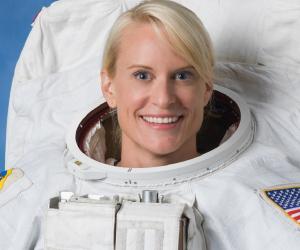
Kathleen Rubins is a microbiologist and NASA astronaut. In 2016, she became the 60th woman to fly in space when she launched on a Russian Soyuz spacecraft. She traveled to the International Space Station and returned to Earth after a few months. She has spent a total of 300 days, 1 hour, and 31 minutes in space.
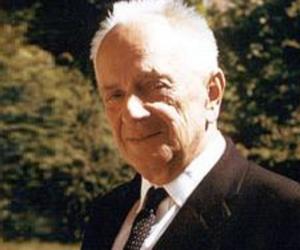
Theodosius Dobzhansky was a Ukrainian-American geneticist and evolutionary biologist. He played a key role in shaping modern synthesis in the field of evolutionary biology. His 1937 book, Genetics and the Origin of Species, is a seminal work on modern synthesis. He was the recipient of several awards, including the US National Medal of Science and the Franklin Medal.
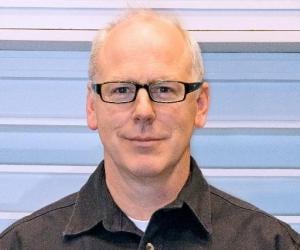
Ernst Mayr was a renowned taxonomist, ornithologist, tropical explorer, historian of science, and philosopher of biology. He was also one of the leading evolutionary biologists of the 20th century. His work contributed immensely to the progression of the biological species concept. Ernst Mayr is also credited with originating the modern philosophy of biology, especially the part concerning evolutionary biology.
Nobel Prize-winning Australian-American biochemist and molecular biologist Elizabeth Blackburn is best known for co-discovering the enzyme telomerase. She was allegedly removed from the American President's Council on Bioethics over her support for stem cell research, which went against the government. She has honorary doctorate degrees from Harvard, Yale, and Princeton.
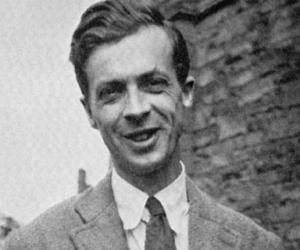
Christiane Nüsslein-Volhard is a German developmental biologist. She studied at the University of Tübingen where she earned a Ph.D. for her research on protein–DNA interactions. Together with biologist Eric Wieschaus and geneticist Edward B. Lewis, she received the Nobel Prize in Physiology or Medicine in 1995. She is also a recipient of the Gottfried Wilhelm Leibniz Prize.
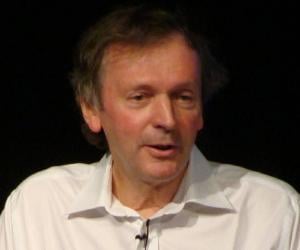
Rupert Sheldrake is an English author best known for his research in the field of parapsychology. He is credited with proposing the concept of morphic resonance, which has been categorized as pseudoscience by mainstream scientists. Rupert Sheldrake is also known for his work encompassing paranormal subjects like telepathy, precognition, and the psychic staring effect.
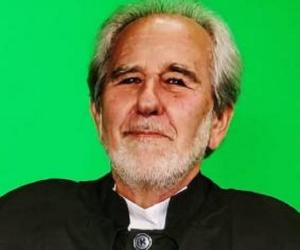
Bruce Lipton is a developmental biologist. He is best known as the author of the book The Biology of Belief, in which he claims that beliefs control human biology rather than DNA and inheritance. He earned a Ph.D. in developmental biology from the University of Virginia and began his academic career. He received the 2009 Goi Peace Award.
David Baltimore is an American university administrator and biologist. He is currently serving as President Emeritus at the California Institute of Technology (Caltech). He won the 1975 Nobel Prize for Physiology or Medicine for his discoveries concerning the interaction between the genetic material of the cell and tumor viruses. In 1999, he was honored with the National Medal of Science.
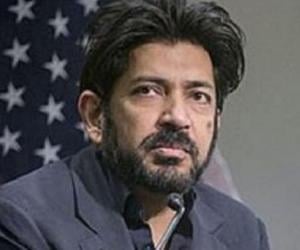
Best known as the author of the Pulitzer Prize-winning book The Emperor of All Maladies and the New York Times bestseller The Gene, Siddhartha Mukherjee is an Indian-American oncologist and a Columbia University professor. He is also a former Rhodes scholar, a Padma Shri winner, and a Stanford alumnus.
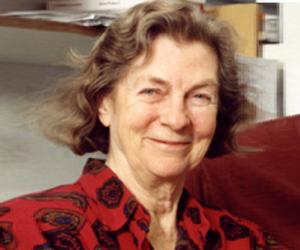
Geneticist Anne McLaren is remembered for her pioneering research in embryology that paved the way for further research in fertility treatments such as in-vitro fertilization. The Royal Society fellow had also appeared as a child actor in the film adaptation of the H.G. Wells novel Things to Come.
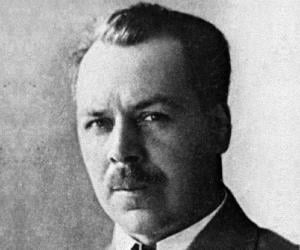
Russian geneticist Nikolai Vavilov not just taught at the University of Saratov but also served as the director of the Bureau of Applied Botany in Petrograd. He made expeditions worldwide, but invited criticism from Soviet agronomist T.D. Lysenko, who was close to Stalin. Vavilov was eventually imprisoned and died in captivity.
Sydney Brenner was a South African biologist who made important contributions to various areas of molecular biology, including the genetic code. Brenner shared the 2002 Nobel Prize in Physiology or Medicine with Sir John E. Sulston and H. Robert Horvitz. Sydney Brenner is credited with founding the Molecular Sciences Institute, which is situated in the United States of America.
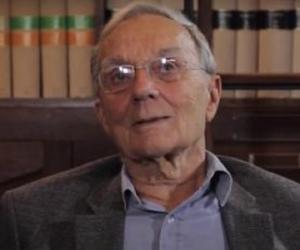
Pierre Joliot is a French biologist best known for his research work at the French National Centre for Scientific Research (CNRS). From 1985 to 1986, he served as the scientific advisor to the then prime minister of France.
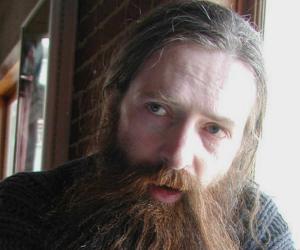
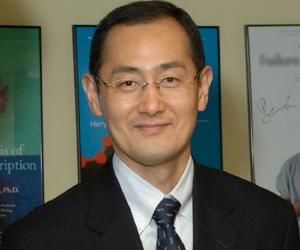
Nobel Prize-winning Japanese scientist Shinya Yamanaka is known for his contribution to stem cell research. He developed the induced pluripotent stem cell, a stem cell that can be created directly from a somatic cell. He is a professor at Kyoto University’s Institute for Frontier Medical Sciences and has held several senior research positions.
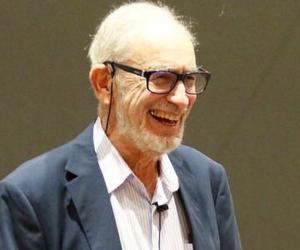
Paul R. Ehrlich is a biologist best known for the 1968 book The Population Bomb, which he co-authored with his wife, Anne. He kindled controversy for his views on the consequences of population growth in a world with limited resources. He has been called an "irrepressible doomster” by his critics, while his supporters credit him for spreading concern about overpopulation.
Ernest Everett Just was an African-American biologist and academic. He is credited with recognizing the fundamental role of the cell surface in the development of organisms. As a black boy growing up in the late 19th century, he had to face enormous challenges before he could establish himself in his career. He co-founded the Omega Psi Phi Fraternity, Inc.
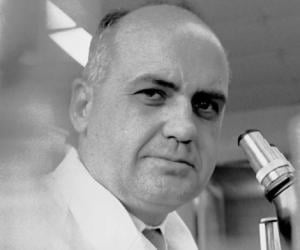
Maurice Hilleman was an American microbiologist who developed more than 40 vaccines. His vaccines save almost eight million lives every year and he is regarded as one of the most important vaccinologists of all time. He also played a major role in the discovery of antigenic drift and shift. In 1988, he was honored with the National Medal of Science.
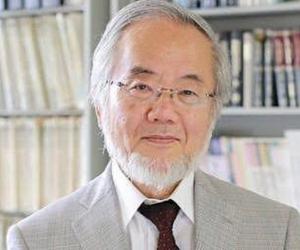
Nobel Prize-winning Japanese cell biologist Yoshinori Ohsumi is best known for his research on autophagy. A Rockefeller University alumnus, he now teaches at Tokyo Tech’s Institute of Innovative Research. He is also known for his pathbreaking contribution to topics such as the DNA, cell, and embryo.
Nikolaas Tinbergen was a Dutch ornithologist and biologist. Counted among the founders of modern ethology, Tinbergen shared the Nobel Prize in Physiology or Medicine in 1973 with Konrad Lorenz and Karl von Frisch for their discoveries concerning the social behavior patterns in animals. He is also credited with authoring an influential book on animal behavior titled The Study of Instinct.
Born to an ENT surgeon in Germany, Hans Adolf Krebs followed in his father’s footsteps and studied medicine. After fleeing Nazi Germany, he went to England, where he joined the University of Cambridge as a researcher. The Nobel Prize-winning scientist is remembered for his groundbreaking discovery of cellular respiration.
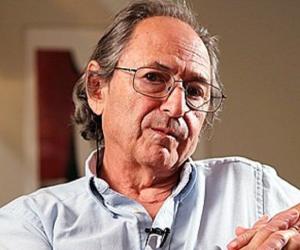
Michael Levitt is a biophysicist who has been serving as a Stanford University professor of structural biology since 1987. Along with Arieh Warshel and Martin Karplus, Levitt received the Nobel Prize in Chemistry in 2013. He has also received several other awards, including the DeLano Award for Computational Biosciences and was inducted into the National Academy of Sciences in 2002.
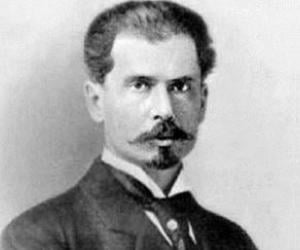
Russian microbiologist Sergei Winogradsky was the first to suggest the concept of the cycle of life. Born into a family of lawyers, he initially aspired to be a lawyer and also studied music, before switching to chemistry and then botany. His research covered sulfur-oxidizing bacteria and the nitrogen cycle.
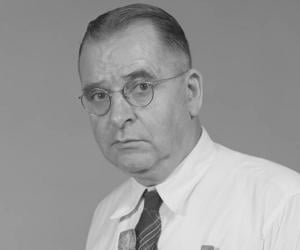
Karl Patterson Schmidt was a herpetologist. He studied biology and geology at Cornell University and realized his keen interest in herpetology. He later worked as a scientific assistant in herpetology at the American Museum of Natural History. He undertook many collecting expeditions for the Field Museum of Natural History in Chicago. He died after being bitten by a boomslang snake.
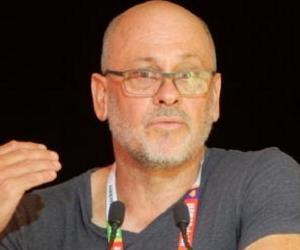
Tim Flannery is an Australian paleontologist, mammalogist, environmentalist, explorer, conservationist, and public scientist. Tim Flannery is credited with discovering over 30 mammal species. He is also credited with co-founding Climate Council, a non-profit organization that aims at providing accurate information on climate change to the Australian public. In 2007, Tim Flannery was named Australian of the Year.

Nobel Prize-winning Irish-American biologist William C. Campbell is best known for his pioneering research on the prevention of parasitic infections in humans and other animals. The Trinity College alumnus later studied at the University of Wisconsin and then worked for Merck. He has also been associated with Drew University.
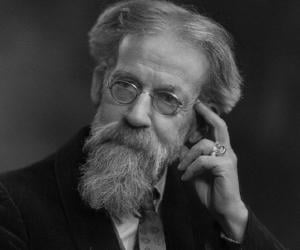
Apart from being a sociologist and biologist, Patrick Geddes was known for his impeccable sense of town planning. While he initially taught botany in Dundee, he later turned to sociology and conducted studies in India, Mexico, and other countries. He was eventually knighted for his achievements.
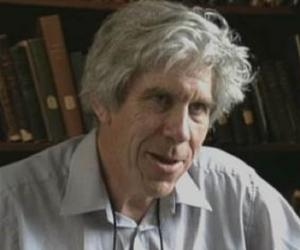
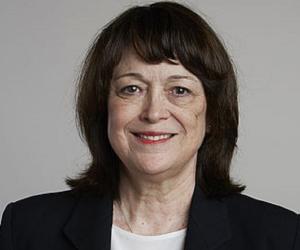
Linda B. Buck is an American biologist who received the 2004 Nobel Prize in Physiology or Medicine for her work on olfactory receptors; she shared the award with molecular biologist Richard Axel. An important and influential biologist, Linda has also won several other awards, such as the Takasago Award, Unilever Science Award, Lewis S. Rosenstiel Award, and R.H. Wright Award.
